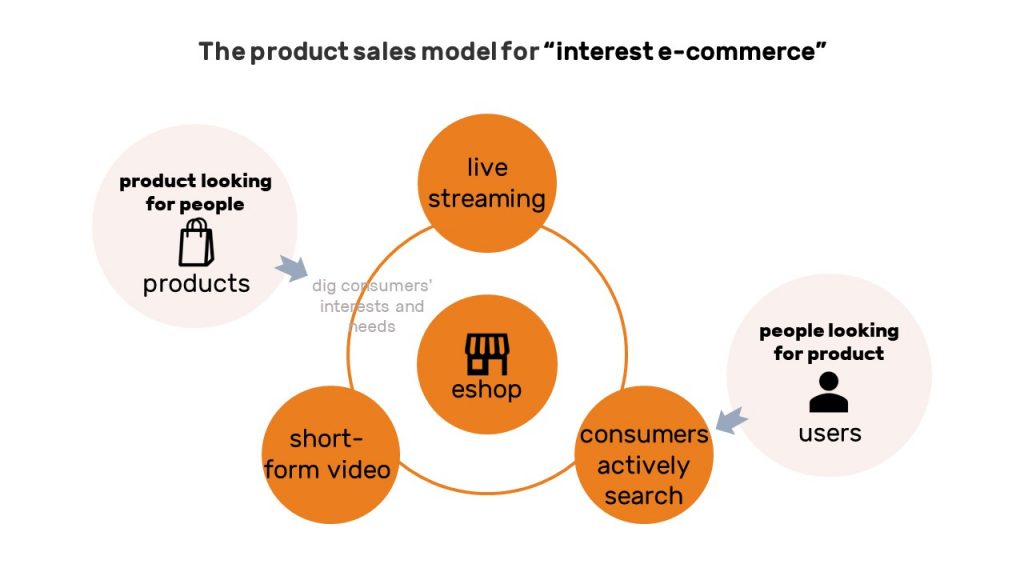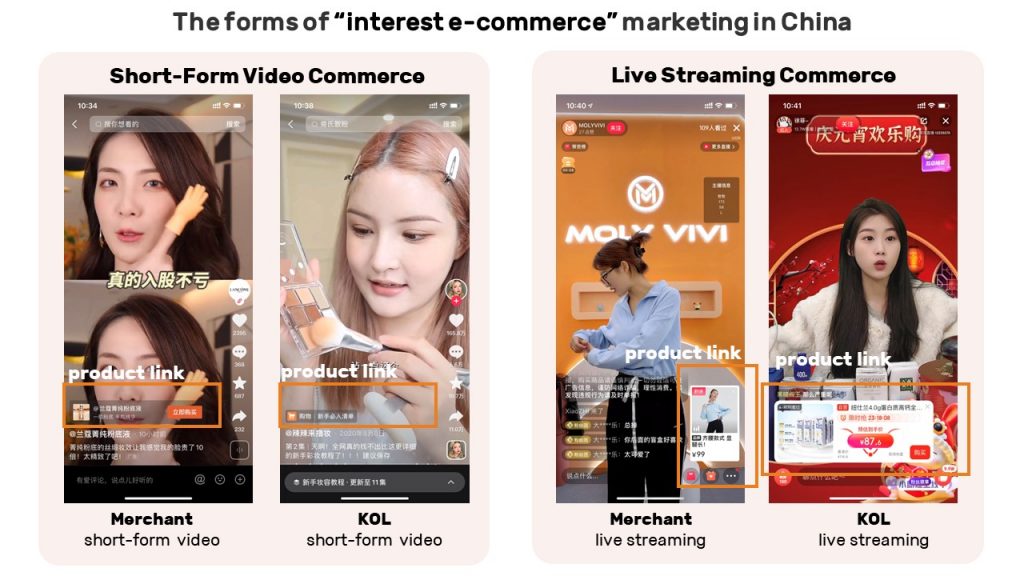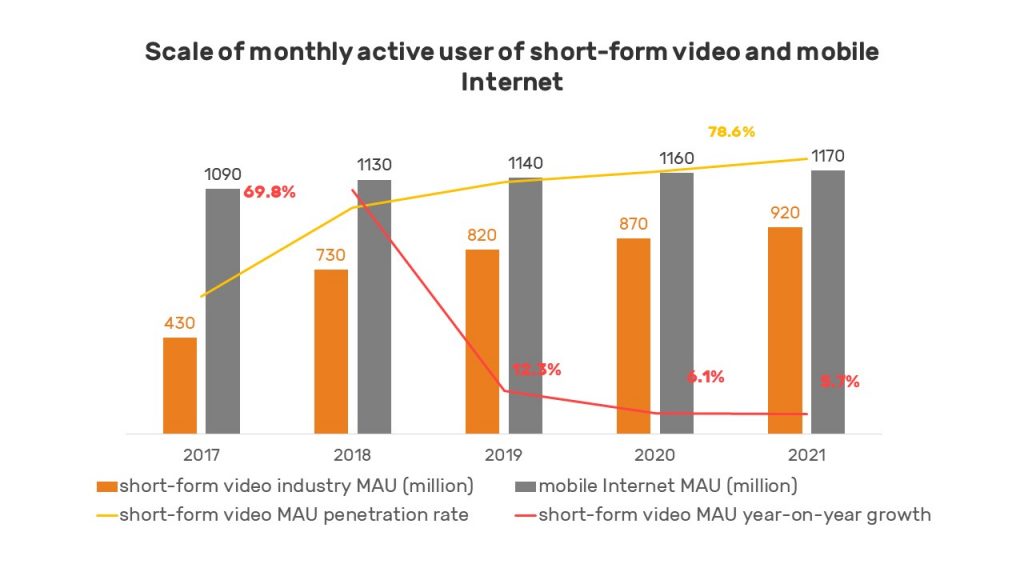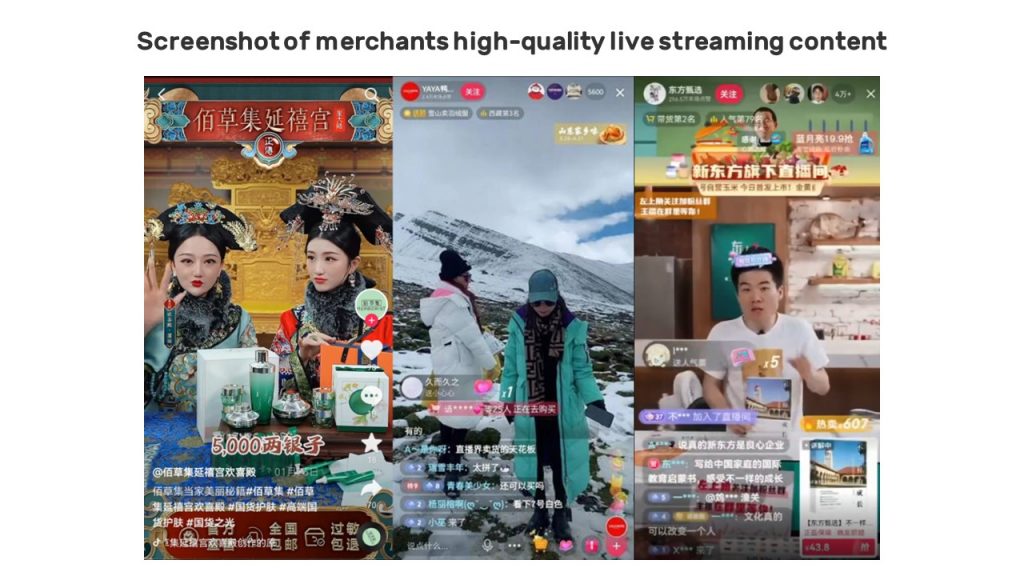The term “interest e-commerce” was first introduced by the President of DouYin E-commerce to describe the new online shopping trend that is driven by interest recommendation technology to increase conversion rates, stimulate buying and enhance shopping experience.
Once, the logic of traditional e-commerce was “to solve consumer needs”, now the logic of e-commerce is “mining and creating consumer needs”. In China, more and more brands are paying attention to consumers’ interests and needs, and they are starting to develop e-commerce strategies to achieve a leap in sales through short-form video and live streaming.
China Daily pointed out that according to third-party forecasts, the market size of “interest e-commerce” will reach US$1,414 billion in 2023.
According to iResearch forecast, in 2023, the live broadcast of China’s “interest e-commerce” will reach a market size of nearly US$745 billion.
In recent years, Chinese social media (TikTok, Xiaohongshu, etc.) and e-commerce platforms (JD.com, Tmall, Pinduoduo, etc.) have been using short-form videos and livestreaming to sell products. They dig into consumers’ interest from all aspects, create demand and stimulate consumers’ purchase behavior. Thus it can be seen that the “interest e-commerce” market in China is so huge!
1. What is “interest e-commerce”: actively help users discover their potential needs.
In the past, the e-commerce sales model was “people looking for products”, and Chinese consumers who wanted to buy a certain type of product would search for the name of the product on the e-commerce platform and then filter the product for purchase. This shopping model is demand-driven consumption, buying what you want.
Now, the product sales model of “interest e-commerce” is “product looking for people”. Based on the AI algorithms, the system is able to effectively understand customer needs and provide users with tailored content that is relevant to their interests and preferences. For example, when I often browse skincare-related content, the system will think that I am interested in skincare and will recommend creams, cleansers and other products for me.
Chinese consumers have changed from buying products when they need, to being recommended by AI algorithms anytime and anywhere in their lives, generating a desire to buy. Solving the “potential demand” of consumers, recommending products that consumers are interested in, and letting consumers pay for their interests is “interest e-commerce”.

Data source:http://www.syntun.com
2. What forms of “interest e-commerce” marketing are used in China?
Merchants create their own brand accounts on e-commerce platforms and social platforms, invite KOLs to promote them, and reach consumers through short-form videos or live streaming. The consumer clicks on the product link to complete the purchase.

3. In 2023, “interest e-commerce” will pay more attention to high-quality content marketing.
According to CNNIC (China Internet Network Information Center) data statistics, the MUA (Monthly Active User) of short videos accounted for 78% of the overall mobile Internet in 2021, and the growth rate of short-form video user scale and penetration rate slowed down. Attracting users’ attention with high-quality content has become the main driving force for obtaining Internet traffic.

Data source:http://www.CNNCI.com
On the other hand, in the past, live streaming in China was aimed at attracting audiences and did not care about the quality of content.
In 2022, Oriental Selection (New Oriental Education & Technology Group) entered “interest e-commerce” and created a live e-commerce like poetry, drawing the highest online audience of over 10 million viewers. Herborist live streaming involved an ancient Chinese palace drama performance that was novel to consumers; Yaya Clothing promoted down jackets amongst snow mountains that stimulated consumers’ desire to purchase, as they were immersed in the wintry environment.

These businesses are delivering more value-added content that enriches the audience’s knowledge, so consumers are more willing to purchase the products being advertised. Other businesses have realized the importance of creating engaging content and have started to pay more attention to the quality of marketing content.
With China’s relaxation of COVID-19 restrictions, the Chinese economy has begun its recovery and an increasing number of overseas brands are keen to enter the Chinese market. They are actively building “interest e-commerce” strategies. Are you also keen to know how your brand can leverage short videos and live broadcasts to drive sales in China? Do you want to form an effective strategy for marketing your business in China? Get started today and consult our CBEC experts to discover the best insights for boosting your business.






